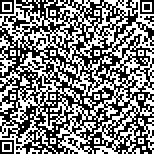本文已被:浏览 647次 下载 2638次
投稿时间:2020-09-27 修订日期:2021-02-26
投稿时间:2020-09-27 修订日期:2021-02-26
中文摘要: 基于1995—2010年四川气象台站降水资料和世界气象组织次季节—季节(S2S)预测计划中8个模式的回报数据,采用命中率、误警率、Heidke技巧评分、误差和偏差5个指标评估分析了各模式对四川汛期极端降水事件的预测能力。结果表明,S2S各模式对四川极端降水的预测技巧整体较低,表现为“低命中率,高误警率,预测值远小于实际值,偏差较大”的特征。各模式的预测技巧随着起报时间的临近而提高,在天气尺度高于次季节尺度。各模式的最高定性预测技巧出现在川西高原南部,最低出现在盆地东部或攀西地区。预测偏差基本呈现出“盆地大,攀西地区次大,川西高原小”的分布特征,最大值均位于盆地西部沿山地区。各模式在汛期各月的预测技巧不同,定性预测技巧在主汛期尤其是盛夏高于其他时段,但定量预测技巧却在盛夏最低。综合定性和定量预测技巧,英国气象局(UKMO)和意大利国家研究委员会大气科学与气候研究所(CNR-ISAC)的模式分别在天气尺度和次季节尺度中对四川极端降水的预测能力较高。分区来看,对于盆地—攀西地区预测能力较高的模式与全省一致。而在川西高原,韩国气象局(KMA)的模式在天气尺度中预测能力较高,澳大利亚气象局(BoM)和CNR-ISAC的模式则在次季节尺度中预测能力较高。
中文关键词: 次季节—季节(S2S)模式,极端降水,预测技巧,检验评估
Abstract:Based on the precipitation data of Sichuan meteorological stations and the hindcast data of eight models in the World Meteorological Organization (WMO) sub-seasonal to seasonal (S2S) forecasting project from 1995 to 2010, forecasting skills of the models for extreme precipitation events during the flood season in Sichuan Province are evaluated and analyzed with five methods. These methods are probability of detection (POD), false alarm ratio (FAR), Heidke’s skill score (HSS), mean error and absolute error. As the results show, the prediction skills of S2S models for extreme precipitation in Sichuan Province are overall low, showing a feature of “low hit rate, high false alarm rate, and the forecast value far less than the observation with large deviation”. The forecast capability of all models improves with the lead-time shortening and their prediction performances on the synoptic scale are better than that on the sub-seasonal scale. Spatially, the qualitative prediction skill of the models is the highest in the south of western Sichuan Plateau, and the lowest in the east of the basin or Panxi Region. Meanwhile, the prediction absolute error present the distribution of “the largest in the basin, the secondly largest in the Panxi Region, the smallest in the western Sichuan Plateau”, and the maximum absolute error appears along the mountains in the western part of the basin. The prediction skills are different in each month during the flood season. The qualitative prediction skills are higher in the main flood season, especially in midsummer than in other months. However the quantitative prediction skill is the lowest in midsummer. Under consideration of quantitate and qualitative forecast ability, among the eight models, models from the United Kingdom Met Office (UKMO) and the Institute of Atmospheric Sciences and Climate of the National Research Council (CNR-ISAC) perform better in forecasting the extreme precipitation in Sichuan Province on the synoptic and the sub-seasonal scale, respectively. The best prediction models for the basin and Panxi Region are consistent with that of the whole province. However, for western Sichuan Plateau, model from the Korea Meteorological Administration (KMA) is optimal on the synoptic scale while models from the Australian Bureau of Meteorology (BoM) and CNR-ISAC are the best forecasting models on the sub-seasonal scale.
keywords: sub-seasonal to seasonal (S2S) model, extreme precipitation, prediction skill, test and evaluation
文章编号: 中图分类号: 文献标志码:
基金项目:四川省科技计划项目(2019YJ0620)、中国气象局创新发展专项(CXFZ2021J018)、国家自然科学基金面上项目(41772173)、中国气象局气候变化专项(CCSF202034)及高原与盆地暴雨旱涝灾害四川省重点实验室科技发展基金项目(2018-青年-06、2018-重点-07、SCQXKJZD2019002)共同资助
| 作者 | 单位 |
| 庞轶舒 | 四川省气候中心,成都 610072 中国气象局成都高原气象研究所/高原与盆地暴雨旱涝灾害四川省重点实验室,成都 610071 |
| 秦宁生 | 中国气象局成都高原气象研究所/高原与盆地暴雨旱涝灾害四川省重点实验室,成都 610071 |
| 刘博 | 中国人民解放军78092部队,成都 610036 |
| 孙昭萱 | 四川省气候中心,成都 610072 |
| 杨淑群 | 四川省气候中心,成都 610072 |
引用文本:
庞轶舒,秦宁生,刘博,孙昭萱,杨淑群,2021.S2S模式对四川汛期极端降水的预测技巧分析[J].气象,47(5):586-600.
PANG Yishu,QIN Ningsheng,LIU Bo,SUN Zhaoxuan,YANG Shuqun,2021.Analysis on Prediction Skills of S2S Models for Extreme Precipitation During Flood Season in Sichuan Province[J].Meteor Mon,47(5):586-600.
庞轶舒,秦宁生,刘博,孙昭萱,杨淑群,2021.S2S模式对四川汛期极端降水的预测技巧分析[J].气象,47(5):586-600.
PANG Yishu,QIN Ningsheng,LIU Bo,SUN Zhaoxuan,YANG Shuqun,2021.Analysis on Prediction Skills of S2S Models for Extreme Precipitation During Flood Season in Sichuan Province[J].Meteor Mon,47(5):586-600.


